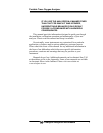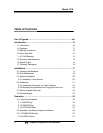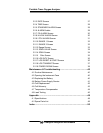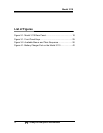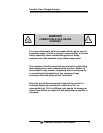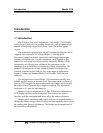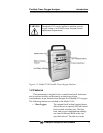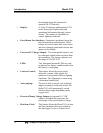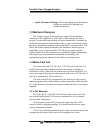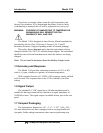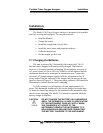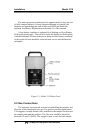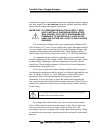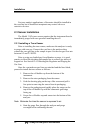
Portable Trace Oxygen Analyzer Introduction
Teledyne Analytical Instruments 13
• Quick Disconnect Fittings: Dual self-sealing quick disconnect
fittings are installed for making easy
sample connections.
1.3 Method of Analysis
The sample oxygen is measured by a unique electrochemical
transducer which functions as a fuel cell; in this instance, the fuel is
oxygen. Oxygen diffusing into the cell reacts chemically to produce an
electrical current that is proportional to the oxygen concentration in the
gas phase immediately adjacent to the transducer’s sensing surface. The
linear, but minute signal produced by the transducer from oxygen is
amplified by a two-stage amplifier. The O2 sensor output signal is
digitized and fed to the microprocessor. Additional signal conditioning
and temperature compensation are handled electronically and
appropriate signals are directed to the display and output ports.
1.4 Micro-Fuel Cell
The micro-fuel cell (U.S. Pat. Nos. 3,767,552 and 3,668,101) is a
sealed electrochemical transducer with no electrolyte to change or
electrodes to clean. When the cell reaches the end of its useful life, it is
removed, properly disposed of, and replaced with a new cell. The life of
the cell is warranted by TAI (see below).
The cell is specific for oxygen and is not sensitive to flow rate or
reducing agents such as hydrocarbons, carbon monoxide, sulfur dioxide,
etc. In the absence of oxygen, no current is produced; thus, no zeroing is
required.
1.4.1 Cell Warranty
The Class B2-C, A2C, B2C-XL and Insta Trace micro-fuel cells
can be used in the Model 3110 and are warranted for six (6) months
from the date of shipment.
With regard to spare cells, service time starts when the cell is
removed from its shipping package. You should stock only one spare
cell per instrument at a time.
If a cell was working satisfactorily but ceases to function before the
warranty period expires, the sensor will be replaced at no cost.



